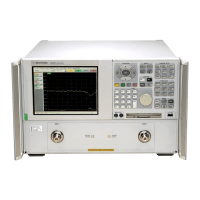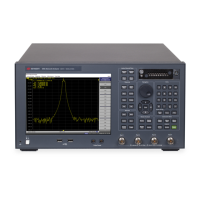User’s Guide 29
E8362/3/4C Option H85
Example: Making High Power Measurements with Option H85
4. Configure the test setup as shown in Figure 18. Turn On the DUT and measure the S21
gain of the amplifier under test to confirm the proper operation of the measurement test
setup.
Figure 18 Forward High Power Measurement Configuration
5. Continue with any other high power measurements.
NOTE Ratio measurements, such as gain, will be correctly displayed. However, the
displayed absolute power levels on the analyzer will not be correct. To
correctly interpret power levels and the gain of the booster amplifier, the
attenuator setting must be taken into consideration.
If no calibration has been performed or if the instrument is in an un-calibrated state, the
following must be taken into consideration when interpreting the measured data:
• The value of attenuation added to receiver A and B.
• The R channel reference level supplied from the coupler arm of the 20 dB coupler.
This procedure can be repeated to setup the reverse high power configuration.
Fix Attenuator
Fix Attenuator
2-Port One Way High
Power Configuration
Booster Amplifier
RF
INPUT
RF
OUTPUT
Coupler
Arm
20 dB
Coupler
Main
Coupler
Output
Fix
Attenuator
CPLR ARM
RCVR A IN
SOURCE OUT
RCVR R1 IN
CPLR THRU
CPLR ARM
RCVR B IN
Isolator
In
Out
SOURCE OUT
CPLR THRU
DUT

